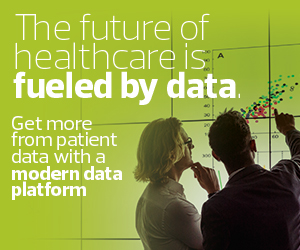How Does Data Governance Impact Healthcare Organizations?
Data is omnipresent in healthcare organizations. The more accessible and reliable it is, the more likely you are to develop insights from it, says Jonathan Shannon, associate vice president of healthcare strategy at LexisNexis. On the other hand, he adds, “your entire business suffers in various ways when data governance policies are poor.”
Krishnan describes three telltale signs of poor governance:
- Duplication of data across clinical systems
- Localized access and privacy policies
- Additional costs, stemming from storing and maintaining data in multiple places and from making mistakes
“It’s one thing if a patient gets the same marketing materials twice,” she says. (That can happen if, say, there are records for Sam Smith and Sam S. Smith at the same mailing address.) “But I don’t want my diagnosis to be wrong because physicians don’t have access to all of my records.”
More broadly, poor data governance in healthcare can have significant business implications. Shannon points to the referral process. There are multiple benefits to referring patients to in-network providers: Patients avoid the high cost of seeing physicians not covered by their insurance plan, and organizations keep patient defections to a minimum.
If provider directories are inaccurate — and data from the Centers for Medicare and Medicaid Services indicates that 49 percent of them are — then it’s that much harder to make in-network referrals, he says. “Very important procedures may be sent up the road and out of the network because someone didn’t know.”
Finally, poor governance poses security and regulatory risks. The 21st Century CURES Act requires organizations to make data available to other healthcare stakeholders, including patients. This requires a delicate balance between security and availability, Shannon says.
“Now, there’s more pressure to make data more accessible,” he says, primarily with open application programming interfaces. “Without data governance, you can’t support open access with APIs.”
DISCOVER: How Community Medical Centers powers operations with data.
How Can Healthcare Organizations Improve Their Data Governance?
When it comes to addressing data governance, healthcare organizations tend to fall into one of three buckets, Krishnan says. Some are just getting started and need help putting a general framework in place. Others have a framework but also have many data silos; this is especially tricky when data is on-premises and in both public and private cloud environments.
Still others have made progress but worry about the implications of duplicate records within newly unified data sets, whether it’s difficulty with regulatory compliance or a lag time to get “business-ready data” to the teams that need it. “These organizations want help to scale for new applications,” Krishnan says. “They want to be enterprise-ready and future-proof.”
A common starting point is what Shannon refers to as a “one-time cleanup” of the organization’s data repository.
“By definition, data grows and changes over time. If your organization has been in business for decades, you’ve been accumulating data for decades,” he says.
When technology upgrades are on the horizon, it’s both expensive and counterproductive to move millions of unnecessary records — those that are duplicates, incomplete, from deceased patients, and so on. Through a combination of referential and probabilistic modeling methods, Shannon says a repository with data from 7 million patients could be trimmed to 1 million patient records. As a result, the repository is more accurate, less expensive to maintain, and well suited for use with next-generation applications for decision support, population health management, and predictive analytics and modeling.
For Money, addressing organizational culture is fundamental to improving data governance.
“You can’t buy data governance off the shelf,” she says. “It has to be understood from the highest level of the organization to the bottom. It should be invisible. No matter the organization, what you’re doing is producing quality, usable, effective products, and data governance is a tool to make that happen.”













